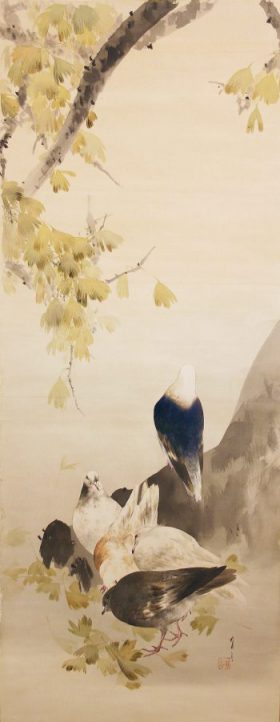02 Meditations
Buson Haiku…
… an old well with a fish jumping at the bottom of it… this reminds me of the “frog pit” at Madam Brett factory… a little square plumbing access pit, no more than 30” square, filled with water, and a frog living in it… such a circumscribed world… i wondered why the frog chose to live there… how it made a living… did it reproduce?… did it ever come out of the pit?… i used to visit the pit regularly until someone decided to seal it up… it seemed like a sacred place, an old well… i wonder how the fish came to be living in the old well?… did someone put it there?… this leads me to a childhood memory, when i discovered a live trout in a cistern on a property near the road… someone must have put it there, to keep it clean?… to preserve until a future dinner?…
… another of the poems describes the beyond-reproach nature of the pigeon and questions whether the mountain cuckoo is… a little research on the internet suggests that the cuckoo was often considered an ill omen, portending tragedy or doing the bidding of the restless dead as in this Kunisada print on the tragedy of the Soga Brothers…
… pigeons are a more benign bird in Japanese lore, encouraged on the grounds of temples and shrines where they are thought to assist the transmission of “hopes and prayers” to the appropriate deities… a woodblock print by Watanabe Seitei, “Ginko and Pigeons”…
… the depiction of pigeons with a Ginko tree, often depicted as Buddah’s Dragon Tree, is a significant indicator of the benign, possibly sacred, nature of the pigeon in Japanese lore… both Ginkos and Pigeons were encouraged on temple grounds1…
… Ginkos are symbols of longevity, living as long as 1000 years2…
… Ginko trees were among a number of tree species that survived the blasts at Hiroshima and Nagasaki and continue to live3…
… well, this morning’s meditation turned into a bit of a research paper…

